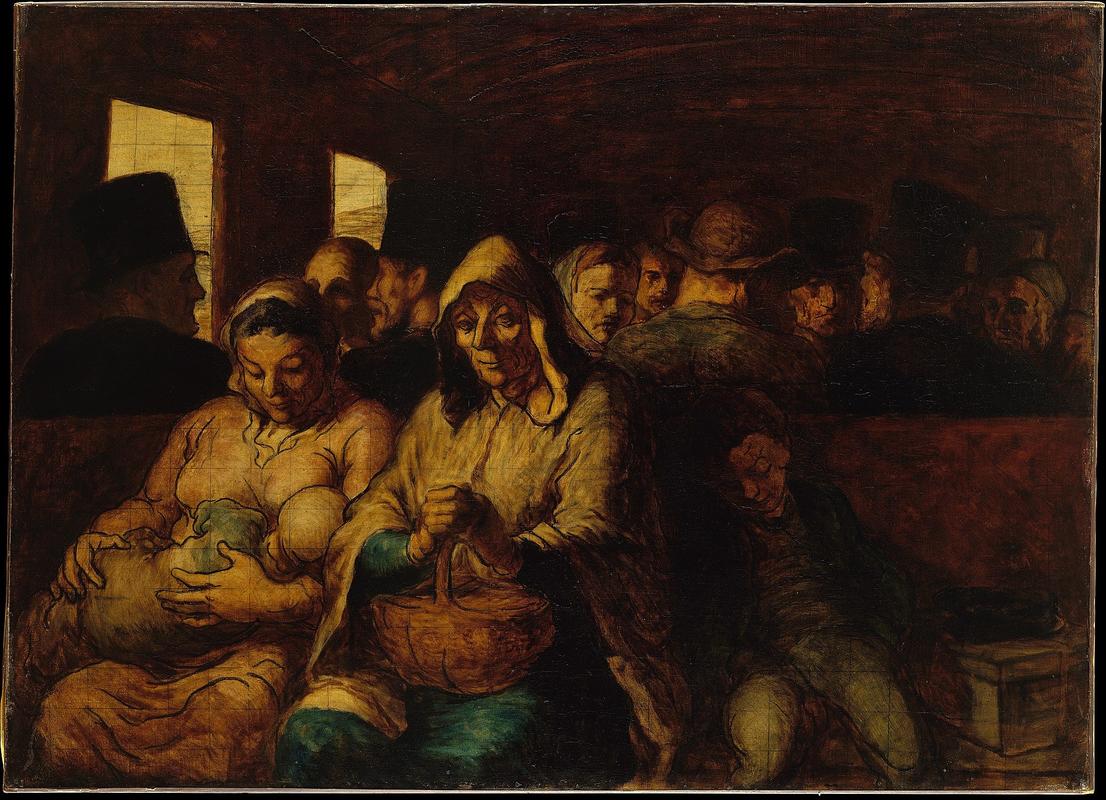More about The Third-Class Carriage

Contributor
Third-class carriage life is best described by Honore Daumier here and by little orphan Annie: “Empty belly life. Rotten smelly life. Full of sorrow life. No tomorrow life.”
And it’s all over these poor people’s faces. They are also slightly confused about this whole train thing because it was super new in the mid-1800s.
Honore Daumier had a knack for painting the lower class. He worked at a bailiff’s office when he was 12 (child labor laws were obviously not a thing yet) and his time there instilled in him a soft spot for the poor and downtrodden. He went on to work for a comic journal where he drew the king as “Gargantua.” This wasn’t the smartest move because it landed him in prison for six months. But his love of satire prevailed, which lead him to create The Third-Class Carriage, a series of three paintings with the others being first- and second-class carriages. But Realism was the thing at the time so nobody paid attention to the bourgie life of the upper classes. Monocles and caviar were out, back-breaking work and bare feet were in.
Everything you need to know about the intent of this painting is in the faces of the people on the train. They could not be more unenthused about the train being so jam-packed with people who in all likelihood don’t smell particularly awesome. Also the fact that there are mostly women on board suggests that they are providing for themselves, making life even harder (1800s was no time to not need no man). But that was the thing about Realism- it didn’t sugar-coat the sh*tstorm that was third-class life.
Sources
- Daumier, Honoré.” 2016. Accessed February 18, 2017. http://www.encyclopedia.com/people/literature-and-arts/european-art-160….
- “Honoré Daumier Biography.” May 7, 2015. Accessed February 18, 2017. http://www.artble.com/artists/honore_daumier/more_information/biography.
- “The Third-Class Carriage.” May 7, 2015. Accessed February 18, 2017. http://www.artble.com/artists/honore_daumier/paintings/the_third-class_….
Featured Content
Here is what Wikipedia says about The Third-Class Carriage
The Third-Class Carriage (French: "Le Wagon de troisième classe") is the name of at least three oil paintings entitled made by the French painter Honoré Daumier. In a realistic manner, Daumier depicts the poverty and fortitude of working class travellers in a third class railway carriage. One oil-on canvas version, dated to c. 1862–1864 but left unfinished, is in the collection of the Metropolitan Museum of Art in New York, and a similar but completed painting dated to c. 1863–1865 is in the National Gallery of Canada in Ottawa. A third oil-on-panel version, dated to c. 1856–1858, with a different arrangement of the main three figures, is held by the Fine Arts Museums of San Francisco.
Check out the full Wikipedia article about The Third-Class Carriage













I identify with history and try to share my experience with other people so they understand the culture and art is such a great way to do that.